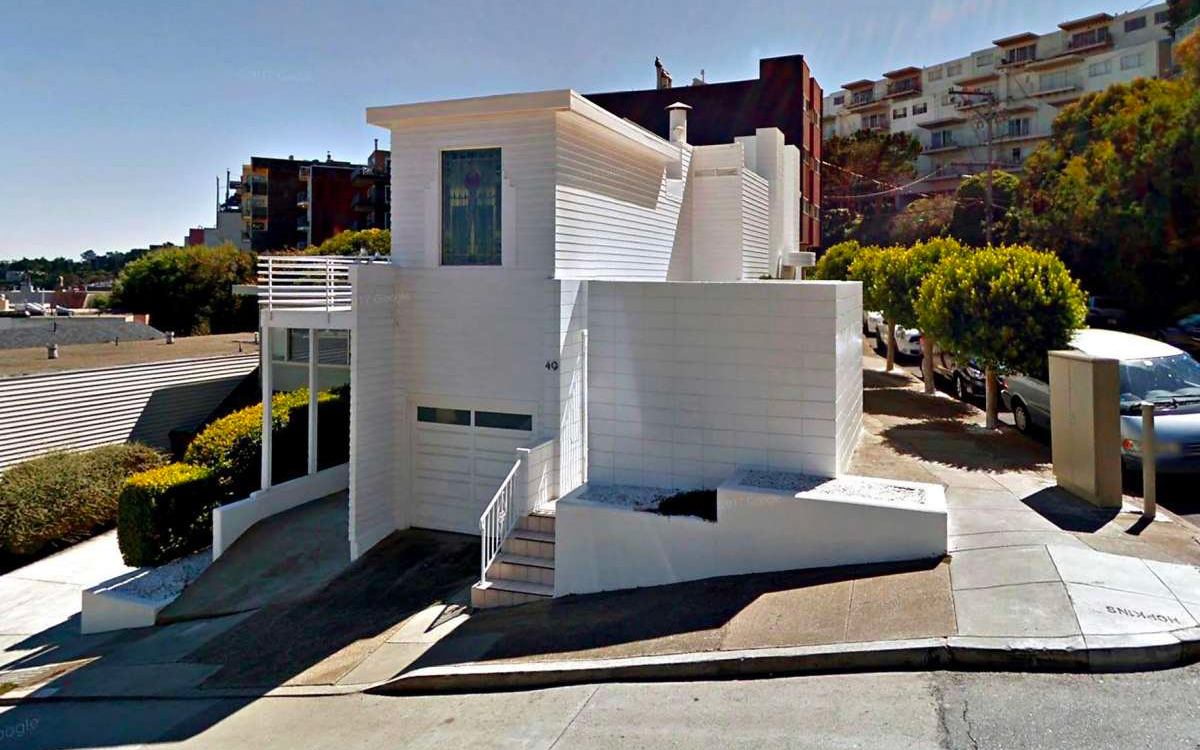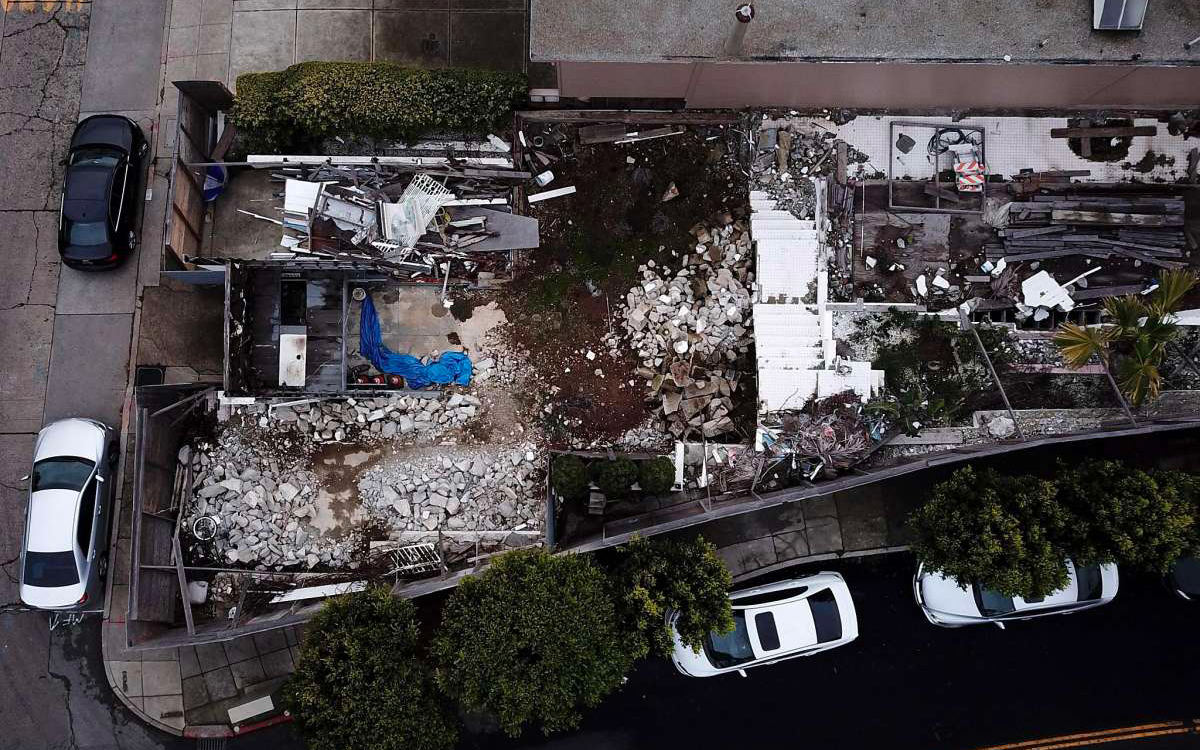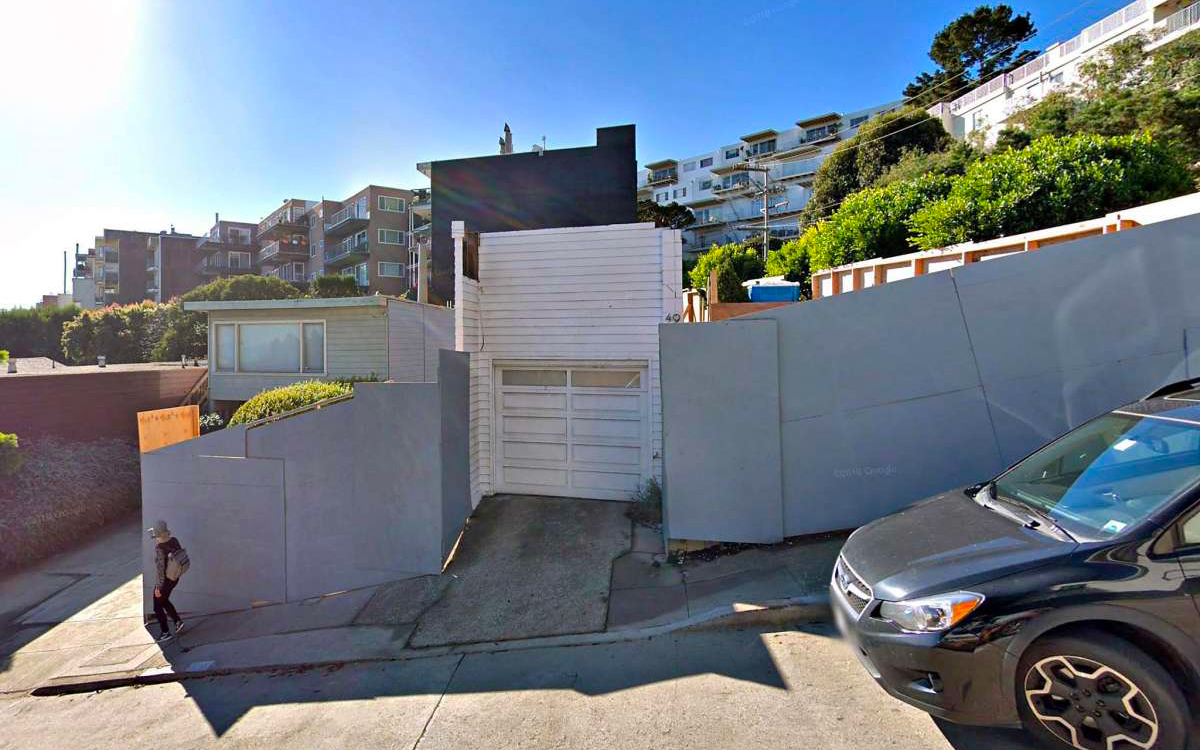Largent House
Architect: Richard Neutra
Year of completion: 1936
Location: San Francisco, CA, USA
Demolished in 2018
Latest update 18 December 2018
Largent House
The Lydia Fuller Largent House, at 49 Hopkins Avenue, in San Francisco California, was commissioned in 1935, designed by modernist architect Richard Neutra and was illegally demolished in 2018. Sold in 1972 to Steve Gungl. Sold in 1982 to Robert Sorenson. Sold in 2004 to Derrik Anderson and Wayne Edfors II. Sold in 2013 to Goldberg LLC. Sold in 2017 to 49Hopkins LLC (Ross Johnston) who without a valid permit destroyed it in early 2018. By December 2018, he was ordered by the Planning Commission to rebuild it. The case is on appeal.
Source: USModernist.org
Photos: Santiago Mejia / The Chronicle
Latest News
Architectural Digest, 13 September 2019
Richard Neutra’s Largent House Won’t Be Rebuilt
J.K. Dineen, 18 December 2018
City-ordered rebuild of landmark house stirs debate: Appropriate or overreach?
The San Francisco Planning Commission’s recent ruling that a property owner must rebuild a 1936 house that was illegally demolished has set off a debate between those who say the punishment fits the offense and others who call it a Disneyesque response that the original architect would have hated.
On Thursday, the commission rejected a proposed 4,000-square-foot house on a Twin Peaks site that for more than 80 years was home to one of five structures that famed modernist architect Richard Neutra designed in San Francisco. Instead, the commission ordered the property owner to build a replica that echoes the “footprint, massing, method and materials” of the original house.
The move, unprecedented in San Francisco, was heralded by Neutra’s 92-year-old son and former partner, architect Dion Neutra, who said that he would love to see the house rebuilt according to the original plans and operated as a publicly accessible cultural center. Dion Neutra said that news of what had happened at the planning commission provoked an avalanche of response among those who care about modernism and his father’s work; he received more than 50 emails about the vote.
“I wish we had a planning commission here in L.A. that had the guts to do what the planning commission in San Francisco did,” he said. “I take my hat off to them.”
The controversial decision comes more than a year after the two-story redwood and concrete block house at 49 Hopkins Ave., known as the Largent House, was almost entirely torn down during a remodel that was supposed to preserve the majority of the first floor. After receiving a notice of violation for the unpermitted demolition, the property owner, a limited liability company controlled by investor Ross Johnston, submitted an application to construct a house three times the size of the one that was torn down.
Johnston’s attorney argued during the commission hearing that the historic integrity of the Neutra house had been erased gradually over the past 50 years, first in a fire in the 1960s and later in a series of remodels. Attorney Justin Zucker blamed the general contractor for the teardown, saying the construction crew decided the house was structurally unsound. “We acknowledge and apologize for the fact that a small portion of the work exceeded the scope in the approved plans,” Zucker told the commission, adding that the decision was made “for life-safety reasons.”
Zucker did not return calls seeking comment on Monday. Johnston could not be reached.
Experts questioned whether the city has the authority to order that a property owner re-create an 80-year-old house. Also unclear is whether the architectural plans are available and how much they would have to be altered to comply with current building codes. And then there is the cost: Johnston paid $1.7 million for the property, and it’s unlikely that he would agree to invest more money in a project that wouldn’t meet his family’s needs.
“Can this be backed up legally? We have no idea,” said Barbara Lamprecht, an architectural historian who wrote three books on Neutra. “If it is constructed, what would happen if a subsequent owner wants to change or alter the plan? What are the (California Environmental Quality Act) implications? There are all kinds of questions floating around.”
Plans for the Largent House are likely in storage at UCLA, where the Richard and Dion Neutra papers are located, Lamprecht said.
“I was shocked, as were many of us, because by any measure it’s a very dramatic gesture,” she said of the commission’s decision. “Neutra buildings are well-built and robustly built, but they are exceptionally fragile because people demolish them overnight.”
Architect and architecture historian Jonathan Pearlman called the decision a “petty and political move that serves no purpose.” Pearlman, a friend of the Neutra family, said that the modernist architect with a cult-like following would have been “appalled” by the commission’s insistence that the house be recreated.
“His approach to design was extremely client-focused, producing his unique and masterful homes that reflect both his own vision married to the direct needs and desires of his client and to the natural environment of the site,” said Pearlman. “To rebuild this house, designed specifically for the Largents over 80 years ago, to represent a current political issue hardly seems like something Neutra would endorse.”
Instead, Pearlman said the property owner should have been hit with a substantial fine, which would then be put into a historic preservation fund, similar to the punishment the city settled on in the 2004 expansion of the Westfield San Francisco Centre mall. In that case the developer was fined $2.5 million after razing a 65-foot facade that was supposed to be preserved.
“The 2019 version of a significantly remodeled house, originally designed by one of the greatest 20th century architects, is certainly not a way to address this problem,” he said.
San Francisco law allows the city to punish property owners guilty of illegal demolitions by restricting any development on the site for five years, according to land use attorney Brett Gladstone, who has been practicing in San Francisco for 30 years. But Gladstone said the commission has rarely done that, and he has never seen it order a property owner to rebuild exactly a house that had been removed.
“The devil is in the details,” he said. “Whether it’s defendable in court depends on how the city writes up its decision.”
The Secretary of the Interior’s Standards, a federal guideline for historic preservation, stipulates that the reconstruction of lost historic buildings should take into “consideration the economic and technical feasibility of each project” and whether such reconstruction is essential to the public understanding of the property. The reconstruction should be in cases where “documentary and physical evidence is available to permit accurate reconstruction with minimal conjecture.”
Miltiades Mandros, an architect and the leading expert on Neutra’s 20 Northern California projects, said what happened in Twin Peaks is happening all over the state, where “the dirt is worth more than the house ever was.” He said he understands the contention that a reproduction is inauthentic but that “it establishes a track record and a great precedent for the next time this comes along.” The Largent House is one of five Neutra did in San Francisco.
“It was a cool little building, and I am just saddened it’s gone,” he said.
Dion Neutra said one-third of the houses built by his father’s firm have been destroyed. If the Largent House is reconstructed, he would like to help out. “We would be happy to work on restoring this home,” he said.
J.K. Dineen is a San Francisco Chronicle staff writer.
Email:jdineen@sfchronicle.com. Twitter: @sfjkdineen.
This article appeared in the San Francisco Chronicle on 18 December 2018.
News Archive
San Francisco Chronicle, 18 December 2018
City-ordered rebuild of landmark house stirs debate: Appropriate or overreach?
Largent House
Richard Neutra
1936, USA


